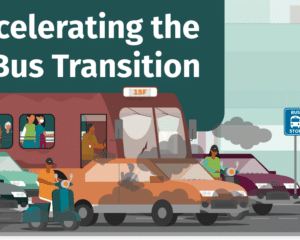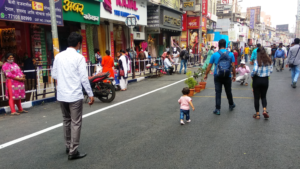
Written by Rohit James Edited by Kashmira Medhora Dubash
Over 40 children die on Indian street every single day! According to the National Crime Records Bureau, in 2015 alone, 15,700 children were prey to road accidents which was seven times the death caused due to the crime against children like murder and foeticide. Yes, India is urbanizing at an unprecedented rate and we are marathoning to meet the demand, but with very little focus on our children.
Written by Rohit James Edited by Kashmira Medhora Dubash

15,700 children are prey to road accidents every year
15,700 children are prey to road accidents every year
Remember the days of traditional outdoor games — hopscotch, marble and conkers, hide-and-seek, and many more that brought together every child in the neighbourhood on to the streets? They were great fun and brought life to our streets. They created opportunities for children for physical immersive that cut across gender and cultural bias. Sadly, today, the streets are dismissed as sepia-toned nostalgia as vehicles took over space which was once adorned by children. Why do we need to focus on children’s mobility pattern, anyway?
Children are catalysts for improving cities. As a youth dominant country, India is home to 446 million children, and we are trending on the first rank position in the world. The quality of urban life experienced by them is likely to influence the society and our global future. Although urban children are considered to have been provided numerous opportunities and benefits as urban residents, as against their rural counterparts, several of them suffer basic child rights.

Urban life experienced by children is likely to infulence the society and out global future
Urban life experienced by children is likely to infulence the society and out global future
In an urban fabric of highly dense neighborhoods, narrow streets, poor air quality, lack of open spaces, and unsafe and unequal access, the city falls short to address the need of the children who yearn for safe streets to walk, cycle and play; access to parks and open spaces; and clean air to breathe. Over the recent decade, the rise in motor vehicles has irrefutably restricted children’s independent mobility and caged them indoors. Not to mention the rising child obesity of about 14.4 million children in India as a repercussion of unplanned urbanization.
On the other hand, the degrading urban environment has made them the most vulnerable road users to being hit by speeding vehicles as children lack the ability to gauge speed besides lack of experience in mix traffic. The dearth of child-friendly city infrastructure has discouraged children to navigate and discover the city on their own and has further curbed their social and cultural interactions.
With inevitable migration foreseen, how can urban planners and designers envisage cities that are child-friendly? Cities that provide children with the freedom to stroll around backed by the adequate infrastructure for their rough and tumbling steps.

Picture courtesy: ITDP China
Picture courtesy: ITDP China

Picture Courtesy: Brian Negin/Flickr
Picture Courtesy: Brian Negin/Flickr
Here are some key takeaways from international case studies highlighted above:
- Identify school zones or children’s priority zone, and install traffic signals and signages at 300 meters from school’s main gate;
- Provide well-designed segregated sidewalks;
- Adopt adequate traffic calming measures like safe road crossing and speed tables near schools, and regulate urban road speed in school zones;
- Design public spaces such as parks and squares to enhance social interaction among children, and promote leisure activities and cultural events;
- Prohibit vehicle parking near the school entrance.
Cities are dynamic and a conducive urban environment influences children substantially over the course of their lives. It is thus imperative to design cities at the heart of children’s mobility pattern. Safer the children, safer the city for all.
This blog post was written by Apoorva Nandish, Intern, ITDP India.


